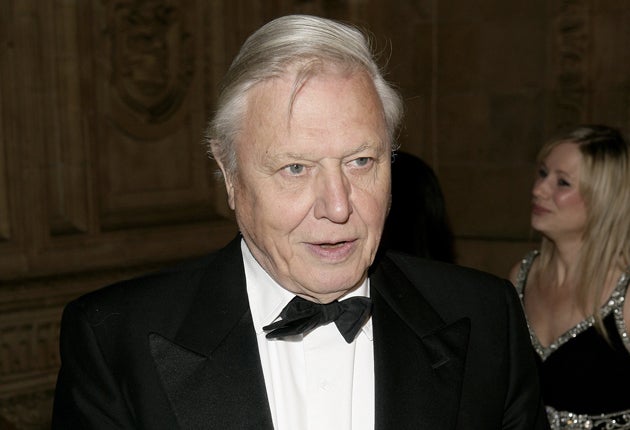Attenborough aghast at global decline of butterfly population
Disappearance of species points to catastrophic environmental damage, says Sir David. Michael McCarthy reports

Butterfly numbers are declining rapidly all around the world, Britain's leading conservationist, Sir David Attenborough, warns today. The celebrated television presenter is sounding the alarm that butterfly loss, a concern in Britain for decades, has become a global problem, with species disappearing in every continent.
They range from the giant swallowtail of Jamaica to the Atewa dotted border from the Atewa mountains of Ghana, from the Oregon silverspot of America's Pacific coast to the Apollo butterfly of the Alps. And their disappearance is a clear indication, Sir David says, of something going very wrong in the background environment.
He is signalling the threat in a speech to the largest-ever gathering of butterfly experts, who come together today for a three-day symposium in Reading.
"Butterflies are sensitive indicators," Sir David said. "They decline when habitats are destroyed and when man harms the environment. We have known about butterfly losses in Britain for over 50 years. Now there is mounting evidence that it is a global problem."
The symposium, attended by 300 scientists and organised by the British charity Butterfly Conservation, has been called to assess the success of efforts around the world in meeting the United Nations target of halting biodiversity declines by 2010. However, the agenda reflects fears in countries throughout Europe and as far apart as Japan and the United States that there is still a long way to go to achieve this.
"Halting biodiversity loss is the coming decade's great challenge," Sir David said. "It's on a par with getting a man on the moon. An increase in butterfly numbers around the world could be the first indication that we've achieved this goal. Like that first step on the moon, it would be a giant leap for mankind."
Dr Martin Warren, Butterfly Conservation's chief executive, said there was increasing evidence that the problem was a global one. "We have just published a new "red list" of European butterflies showing that around 10 per cent of European butterfly species are facing possible extinction," he said. "We are getting the same message from elsewhere. Symposium delegates come from all six continents and they are all saying the same. Declines on the scale of those occurring in Britain and in Europe are happening in their part of the world too. Habitats are being destroyed; butterflies and other wildlife are in decline."
Dr Warren said that it was already apparent that the 2010 deadline for halting biodiversity loss had not been met. But he added that trying to achieve it had been important. "I think we now know the enormity of the challenge. We must make it a top priority in the coming decade."
Monitoring of butterfly numbers started in the UK in 1976 and has spread around the world. The "red list" of European butterflies, published last week, stated that one species, the Madeiran large white, had already probably become extinct in recent years. Other endangered European butterflies include the Danube clouded yellow, now confined to a few sites in Romania, and the violet copper, a beautiful wetland species that has undergone drastic declines in many countries.
Four British butterflies that are in serious decline at a European level are the large blue (reintroduced after going extinct in the late 1970s), the large heath, the Duke of Burgundy and the Lulworth skipper.
The latter two had their worst ever year in Britain last year, and have declined by 65 per cent and 87 per cent respectively since 2000.
Subscribe to Independent Premium to bookmark this article
Want to bookmark your favourite articles and stories to read or reference later? Start your Independent Premium subscription today.

Join our commenting forum
Join thought-provoking conversations, follow other Independent readers and see their replies